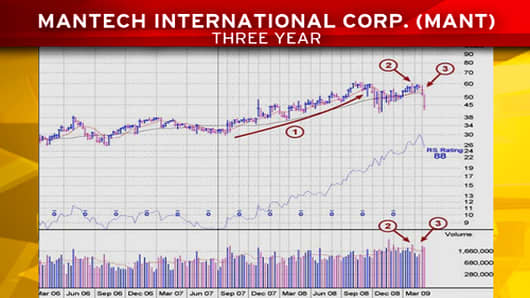ManTech International has taken a sizable hit this week, dropping almost 16% in just four days. What’s strange, though, is that there’s been no fundamentals-based reason for the drop. This information-technology national security company is just the kind of outfit President Obama likes. He’d set aside substantial funding for upgrading our country’s computer networks. And MANT has been known as a growth stock, having doubled over 2007 and 2008.
But on Tuesday President and Chief Operating Officer Robert Coleman announced his departure and Jesup & Lamont downgraded the stock. There was also a significant amount of institutional selling. That’s something a fundamentals based trader – who judges a stock based on its company’s underlying business – would have missed because that selling was only apparent on MANT’s chart. This might be one of the few times that even Cramer has to admit that technical analysis has its place on Wall Street.


